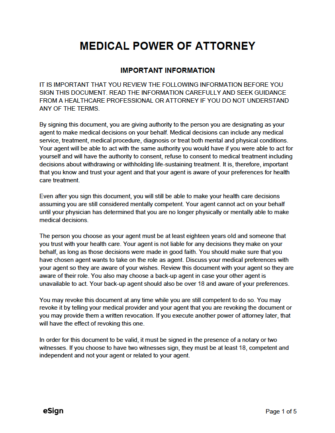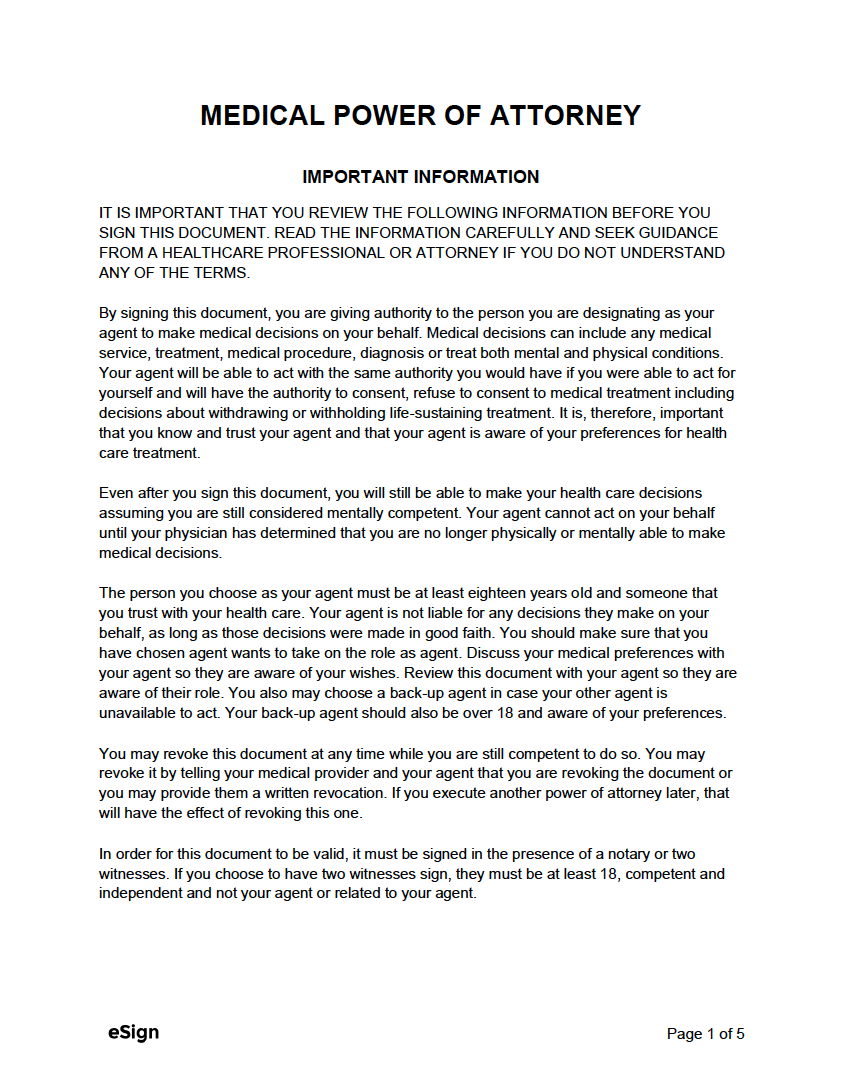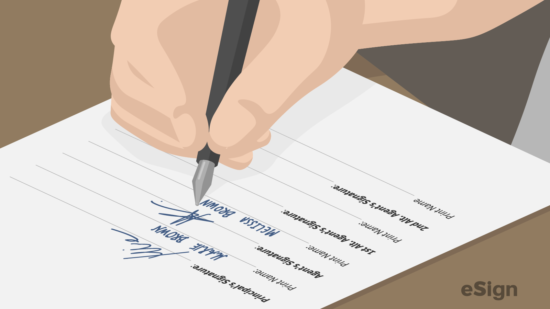Document Features
- Appointment – The principal can appoint a trusted individual to make health care decisions should they become incapacitated.
- Limitations – This section allows the principal to restrict specific powers they do not wish to grant the agent.
- Alternate Agents – Additional health care agents can be named to replace the original agent if the original agent cannot serve.
- Termination – The principal can establish an expiration date and may revoke the power of attorney at any time while competent.
- Execution – The medical power of attorney is legally binding once signed by the principal, agents, and either a notary public or witnesses.
Also known as a:
- Power of Attorney for Healthcare
- Health Care Power of Attorney (HCPA)
- Health Care Proxy
- Durable Power of Attorney for Health Care
By State
- Alabama
- Alaska
- Arizona
- Arkansas
- California
- Colorado
- Connecticut
- Delaware
- Florida
- Georgia
- Hawaii
- Idaho
- Illinois
- Indiana
- Iowa
- Kansas
- Kentucky
- Louisiana
- Maine
- Maryland
- Massachusetts
- Michigan
- Minnesota
- Mississippi
- Missouri
- Montana
- Nebraska
- Nevada
- New Hampshire
- New Jersey
- New Mexico
- New York
- North Carolina
- North Dakota
- Ohio
- Oklahoma
- Oregon
- Pennsylvania
- Rhode Island
- South Carolina
- South Dakota
- Tennessee
- Texas
- Utah
- Vermont
- Virginia
- Washington
- West Virginia
- Wisconsin
- Wyoming
Medical Power of Attorney Purpose
A medical power of attorney is used to plan for end-of-life care and medical emergencies. By designating a healthcare agent, the form ensures a trusted person will carry out the patient’s medical wishes and make decisions on their behalf when they are incapacitated.
Permitted Medical Decisions
A medical POA gives the agent full authority to make any healthcare decision the principal could make if they were not incapacitated. To limit this power, the principal can specify restrictions in the document.
It’s important for the principal to also create a living will, which provides written medical instructions and preferences to help guide the agent’s decisions.
How to Get a Medical Power of Attorney
Step 1 – Select the Agent
The principal must select at least one agent, typically a spouse, family member, or close friend. The agent must be at least 18 years old and generally cannot work at the healthcare facility where the principal receives treatment. It’s strongly recommended to name a successor agent in case the primary agent is unavailable.
Step 2 – Draft the Power of Attorney
Many states have specific medical power of attorney forms that can be filled out. In most cases, the POA gives the agent complete authority to make healthcare decisions while the principal is incapacitated. However, this authority may be restricted if the principal includes specific limitations.
Step 3 – Sign the Form
After filling out the necessary sections, the principal must sign the form in compliance with state law. To be legally valid, many states require the medical power of attorney to be notarized, signed by two witnesses, or both.
Step 4 – Distribute
Copies of the completed POA should be given to the principal’s attorney, primary care physician, and anyone else who may need access to it. The agent must also have a copy available when acting on the principal’s behalf. A record should be kept of all recipients, as they must be informed if the POA is ever amended or revoked.





